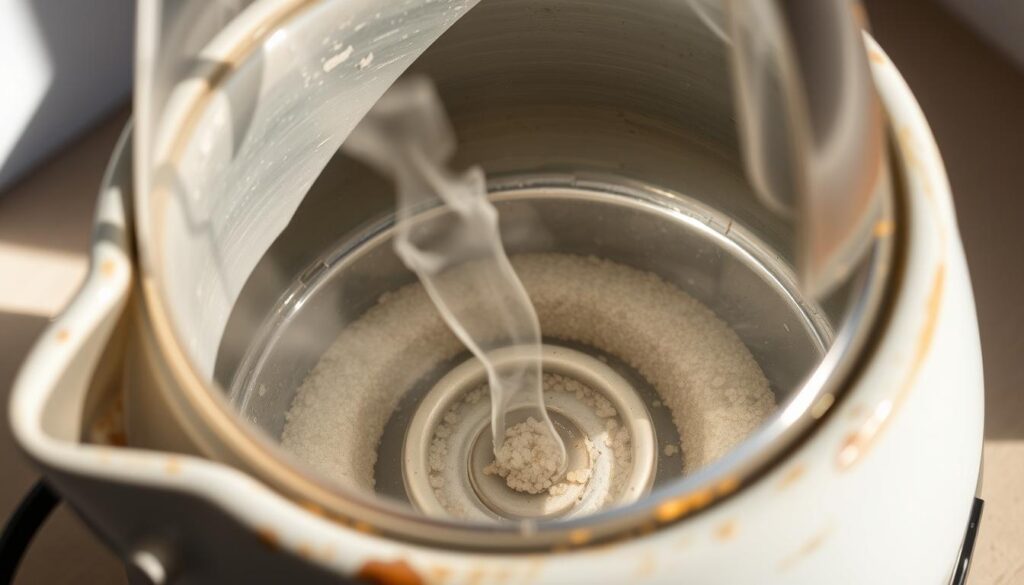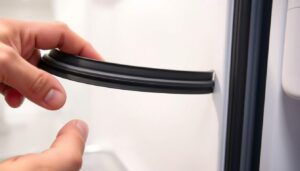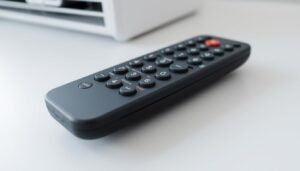For many of us, a cup of coffee is essential to kick-start the day, but a sluggish appliance can be a significant hindrance. Electric kettles have become a staple in most kitchens, offering speed and convenience for boiling water.
However, like any other appliance, they can sometimes experience issues that affect their performance. When your kettle stops boiling water properly, it can disrupt your daily routine.
Understanding the common issues that affect electric kettles can help you diagnose and repair problems quickly.
Key Takeaways
- Diagnose common issues affecting your electric kettle’s performance.
- Troubleshoot problems to restore your kettle to working condition.
- Extend the lifespan of your appliance with practical solutions.
- Reduce unnecessary waste by opting for repair over replacement.
- Implement simple checks to identify and resolve issues.
Why Your Electric Kettle Might Not Be Boiling
Understanding why your electric kettle is not functioning correctly is crucial for effective troubleshooting. Several factors can contribute to this issue.
Common Causes of Kettle Failure
Common electric kettle issues include power supply problems, limescale buildup, faulty switches, or damaged heating elements. Limescale accumulation is particularly common in areas with hard water and can significantly impact your kettle’s performance over time.
| Cause | Description |
|---|---|
| Power Supply Issues | Problems with the power cord or socket can prevent the kettle from boiling. |
| Limescale Buildup | Mineral deposits can reduce the kettle’s efficiency and cause it to malfunction. |
| Faulty Switches | A damaged or worn-out switch can prevent the kettle from turning on or functioning correctly. |
Benefits of Repairing vs. Replacing
Repairing your electric kettle rather than replacing it offers significant environmental benefits, reducing waste and conserving resources. By fixing your kettle, you can avoid producing 1 kg of CO2, equivalent to 49 trees absorbing CO2 in a day. This not only saves you money but also provides the satisfaction of extending the life of your appliance.
Safety Precautions Before Troubleshooting
Before attempting to repair your electric kettle, it’s essential to take necessary safety precautions to avoid any potential hazards. Ensuring your safety is paramount when dealing with electrical appliances.
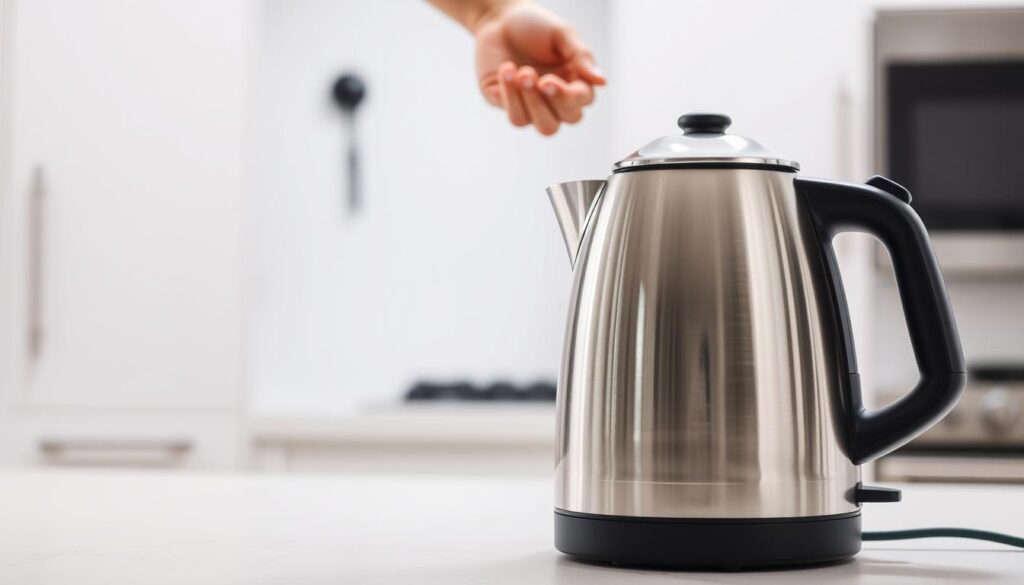
Disconnecting from Power Source
To prevent electric shock, make sure the kettle is unplugged before handling internal parts. This is a crucial step that should never be skipped.
- Verify that the kettle is completely disconnected from the power supply.
- Check that the outlet is working properly or try using a different outlet.
Handling Electric Components Safely
When handling electrical components, ensure your hands are dry and you’re working in a dry environment to prevent short circuits. Be cautious when dealing with potentially sharp or fragile parts.
| Safety Precaution | Importance |
|---|---|
| Unplugging the kettle | High |
| Dry hands and environment | High |
| Avoiding immersion in water | High |
By following these safety guidelines, you can minimize risks associated with troubleshooting and repairing your electric kettle.
Check the Power Supply and Connection
The initial step in diagnosing an electric kettle issue is verifying its power supply and connection. This helps determine whether the problem lies with the kettle or its power source. A faulty power supply can often be the simplest explanation for an electric kettle that won’t boil.
Inspecting the Power Cord for Damage
Inspect the power cord thoroughly for any visible signs of damage, such as fraying, kinks, or exposed wires. If you detect any damage, discontinue use to prevent electric shocks and fire hazards. For kettles with detachable cords, ensure the cord is securely connected to both the kettle and the wall socket.
Testing the Wall Socket
Test your wall socket by plugging in another appliance to confirm whether the issue lies with the kettle or the power source. Also, check that the kettle is properly seated on its base, as poor contact can prevent power from reaching the heating element.
| Troubleshooting Step | Action |
|---|---|
| Inspect Power Cord | Check for visible damage |
| Test Wall Socket | Plug in another appliance |
By following these steps, you can identify and potentially resolve the issue with your electric kettle. If the problem persists, it may be necessary to inspect the internal wiring or switch.
How to Repair Electric Kettle Not Boiling Due to Limescale
When your electric kettle fails to boil, it’s often due to limescale buildup from hard water. Limescale accumulation can significantly impair the kettle’s performance, leading to longer boiling times or complete failure to boil.
Identifying Scale Buildup
You can identify scale buildup by noticing white, chalky deposits on the heating element or interior walls of your kettle. Changes in water taste can also indicate limescale presence. Regular inspection can help you catch this issue early.
Step-by-Step Descaling Process
To descale your electric kettle, fill it with a 1:1 ratio of water and distilled white vinegar or a descaling agent. Boil the mixture, then let it sit for 20 minutes. After unplugging, scrub the interior with a cloth, using extra vinegar for stubborn deposits. Rinse thoroughly afterward.
Recommended Descaling Frequency
The frequency of descaling depends on your water hardness and kettle usage. For areas with soft water and moderate use (up to five times a day), descale every three months. For hard water areas or heavy use, consider descaling monthly or even weekly.
| Water Hardness | Usage Frequency | Descaling Frequency |
|---|---|---|
| Soft Water | Up to 5 times/day | Every 3 months |
| Hard Water | Up to 5 times/day | Monthly |
| Soft Water | More than 5 times/day | Every 2 months |
| Hard Water | More than 5 times/day | Weekly or Bi-Weekly |
Regular descaling not only improves boiling efficiency but also extends the lifespan of your kettle by preventing damage to the heating element. For stubborn limescale, consider repeating the descaling process or leaving the vinegar solution overnight.
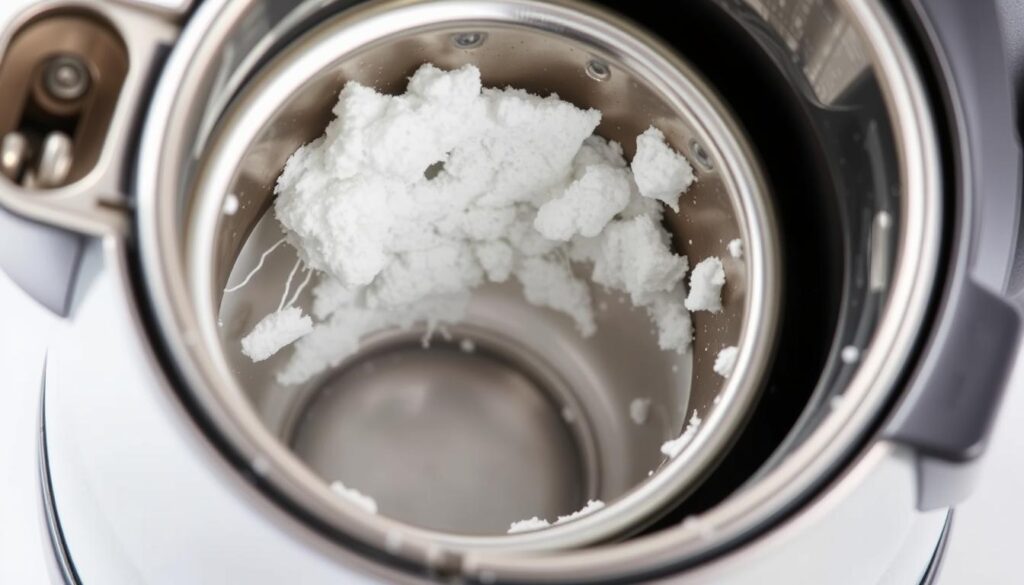
Fixing Switch and Contact Problems
When your kettle doesn’t boil, checking the switch and contacts is a crucial step. Issues with these components can prevent your electric kettle from functioning correctly, even when the power supply is working properly.
Troubleshooting On/Off Button Issues
If your kettle’s on/off button is loose or not responding, it may need re-fastening or cleaning. Sometimes, a damp cloth can resolve the issue. If the button is broken, consider replacing it with a new one.
Cleaning Kettle Base Contacts
Poor contact between the kettle and its base can interrupt the electrical circuit. To resolve this, clean the contacts on both the kettle and its base using a soft cloth slightly dampened with isopropyl alcohol.
Resetting Dry-Boil Protection
Many modern kettles feature dry-boil protection, which shuts off the kettle when there’s insufficient water. To reset, ensure the kettle has cooled, fill it with water above the minimum mark, and then switch it on again.
| Issue | Solution |
|---|---|
| Loose or non-responsive on/off button | Re-fasten or clean the button |
| Poor contact between kettle and base | Clean the contacts with isopropyl alcohol |
| Dry-boil protection activated | Reset by filling with water and switching on again |
By addressing these common issues, you can often restore your electric kettle’s function without needing professional help. Regular maintenance, such as cleaning contacts and checking the switch, can prevent future problems.
Conclusion: When to Seek Professional Help
While DIY troubleshooting can resolve many electric kettle issues, there are times when calling a professional is the best course of action. If you’ve tried all the suggested solutions and your kettle still isn’t boiling properly, it may indicate a more serious electrical problem that requires expert attention.
Consider seeking professional help if you notice any burning smells, unusual noises, or if the kettle trips your home’s circuit breaker when in use. Safety should always be your priority—if you’re uncertain about any repair procedure, it’s better to consult a professional than risk injury or further damage to your appliance.
- Compare the cost of repair against the price of a new kettle to determine the most economical solution.
- If your kettle is still under warranty, contact the manufacturer before attempting any repairs that might void your coverage.
- Regular maintenance and prompt attention to minor issues can prevent more serious problems from developing over time, extending the lifespan of your electric kettle.
By taking the right approach to repairs and maintenance, you can enjoy a safe and efficient heating experience with your kettle for a long time. For additional support, consider consulting resources from trusted sources or reaching out to professionals who can provide guidance and assistance.
